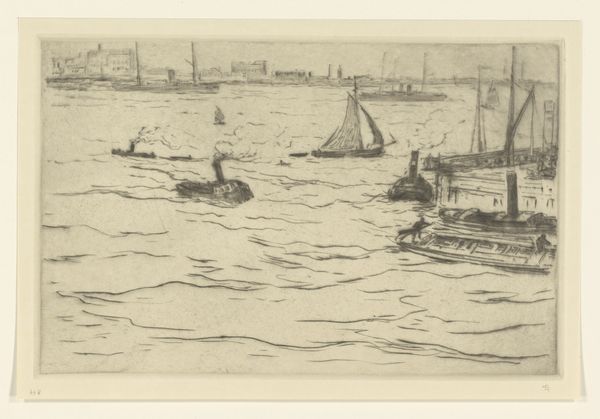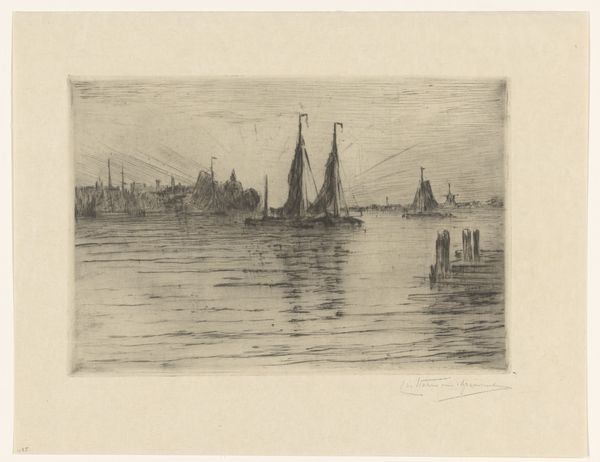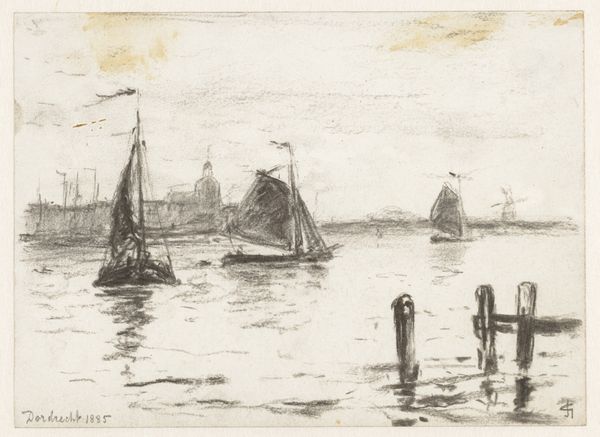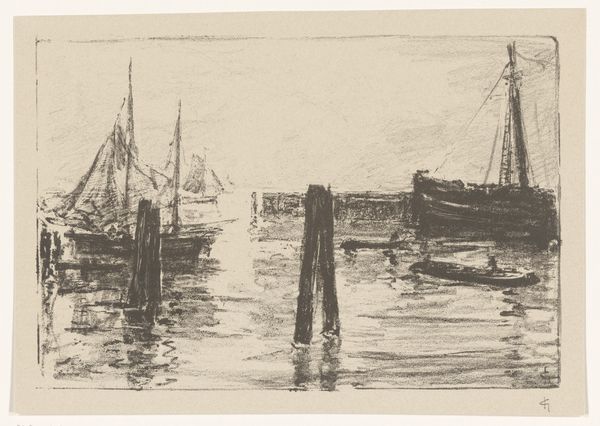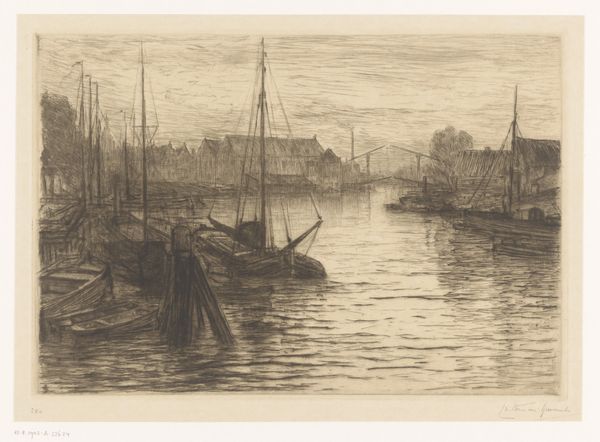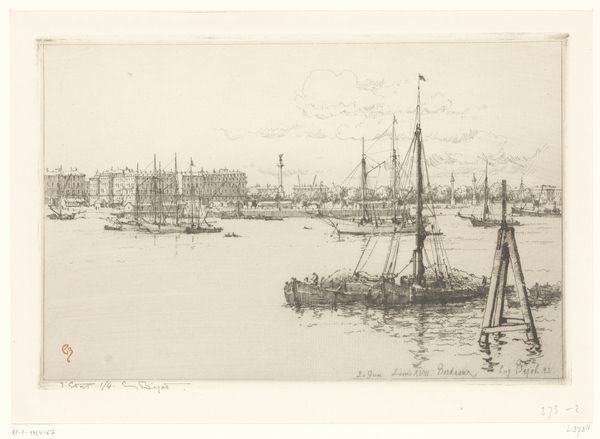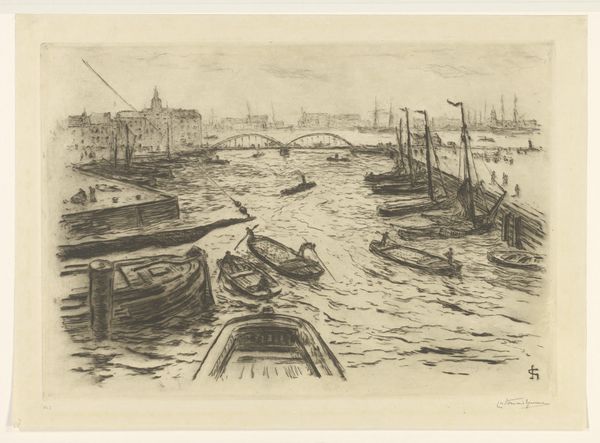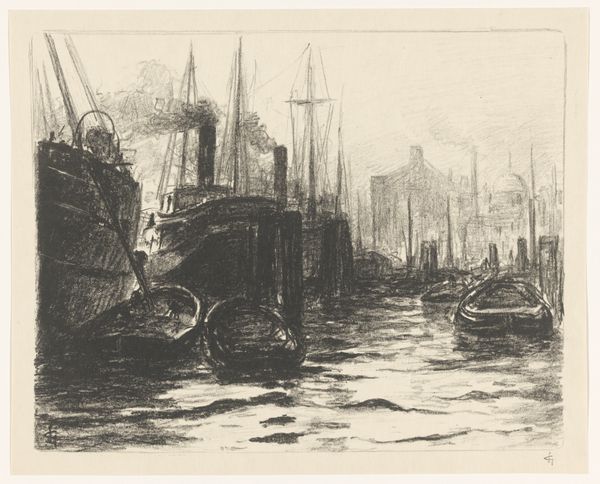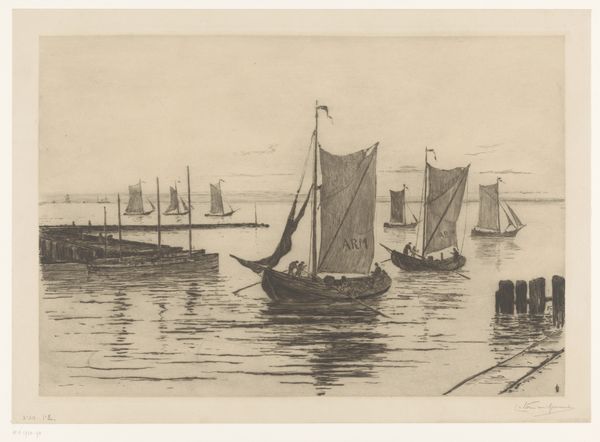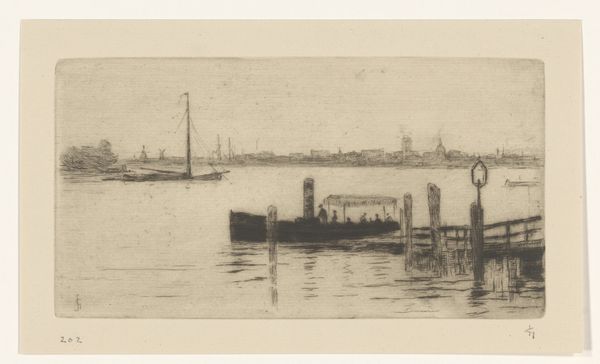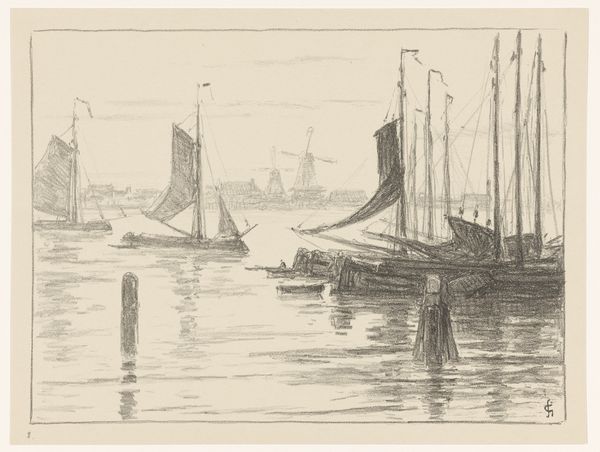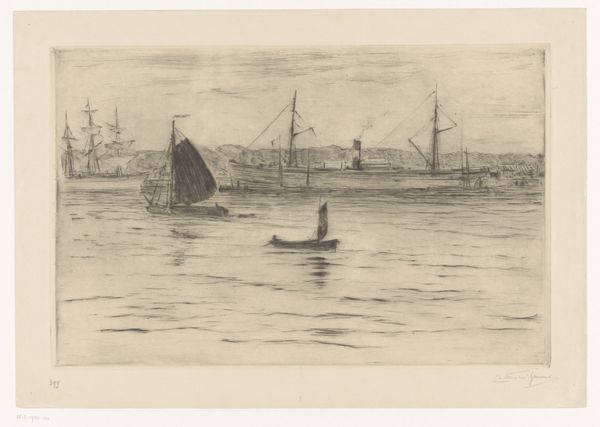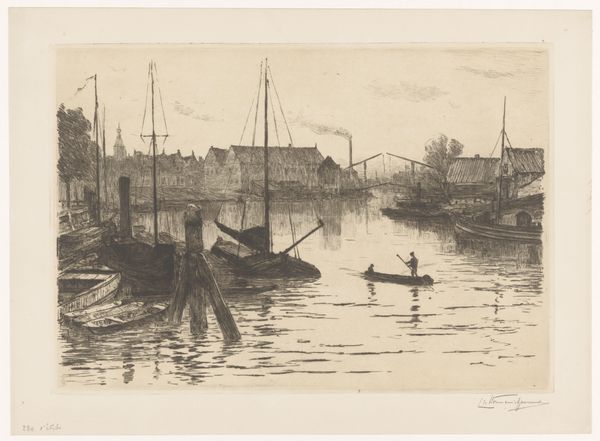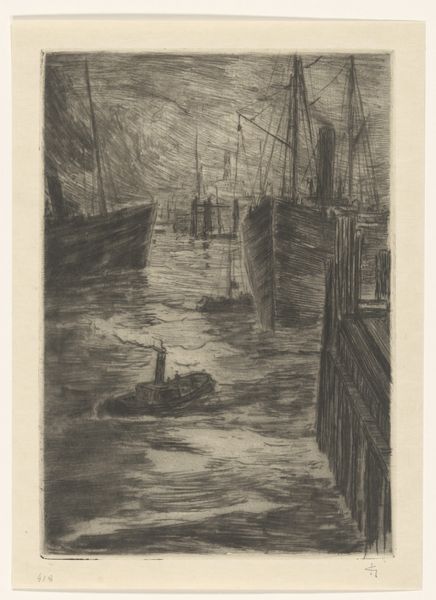
Dimensions: height 357 mm, width 534 mm
Copyright: Rijks Museum: Open Domain
Curator: Carel Nicolaas Storm van 's-Gravesande’s "Havengezicht," created between 1889 and 1903 and now housed in the Rijksmuseum, depicts a tranquil harbour scene in delicate etching. Editor: It's quite subdued, isn't it? Almost monochromatic, rendered in tones that evoke a somber stillness over the scene. Curator: Yes, the limited palette certainly contributes to the overall mood. Note the artist’s chosen medium of etching, augmented with ink and drawing which provides those finely articulated details that give it a feeling of quiet industry. In its depiction of place, it reminds me of Whistler’s interest in industrialized riverscapes as well, it clearly bears the mark of impressionism. Editor: From a formal standpoint, I’m particularly drawn to the composition. The layering of boats in the foreground, leading the eye towards the distant structures on the horizon—the artist used linear perspective, however subtly. It guides us through the piece. Curator: Harbor scenes have long held a significant place in artistic symbolism. The sea often signifies journeys, both literal and metaphorical. And cities as representing human aspirations. Here the presence of both creates a very profound impression in relation to ideas such as adventure, change and passage of time. The very heart of civilization. Editor: Indeed. One may wonder what type of "journey" one embarks on when visiting it and where the horizon extends into; where, as an open door for both travelers and viewers. I imagine that its semiotic landscape could serve as an index to explore a sense of identity in transit as well. Curator: I appreciate your observation. This is not only a harbor scene but a representation of broader human experience – of ambition and aspiration and perhaps even an invitation to explore our place in the world. Editor: It's certainly sparked thoughts about perspective and how such a reserved, subtle rendering can provoke such consideration. Curator: For me, it is also an exercise of capturing history, it invites viewers to reconsider the evolution and transition from then to the present, along with questions about origins and destination.
Comments
No comments
Be the first to comment and join the conversation on the ultimate creative platform.
